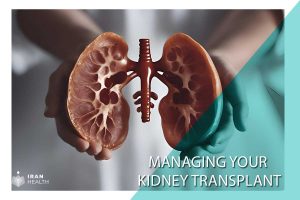Kidney transplant types:
| Type of Donor | Description | Advantages | Disadvantages | Waiting Time | Outcomes |
| Living Donor | A healthy person donates one kidney. | Shorter waiting time, better outcomes, scheduling flexibility | Requires compatibility testing, surgical risks for the donor, and potential health impact on the donor. | Dramatically faster than the deceased donor | Better organ function and survival |
| Deceased Donor | A recently deceased individual donates one kidney. | Provides opportunity for patients without a living donor, saves lives | Longer waiting time, higher complication risks, and less control over timing. | 5-10 years (varies) | Good organ function and survival |
| Subcategories of Deceased Donors: | |||||
| Standard Criteria Donor (SCD) | Under age 50, there are no specific risk factors. | Higher quality and function of the kidney, more prolonged survival | Scarce and in high demand | 5-10 years | Good organ function and survival |
| Expanded Criteria Donor (ECD) | Over 60 or 50-59 with specific risk factors. | Increases available organs, reduces waiting time | Lower quality and function of the kidney, shorter survival | Shorter than SCD | 5-10% lower than SCD |
| Donation after Cardiac Death (DCD) | The heart stopped before organ removal, not brain dead. | Increases available organs, reduces waiting time | Higher risk of delayed function, shorter transplant survival | Shorter than SCD | Similar to SCD |
What are the factors to consider when choosing the type of kidney transplant?
Availability: You’ve probably heard that deceased donor kidneys are generally easier to come by, but the harsh reality is that the waiting times can take a long time. On the flip side, if you’ve got someone close to you who’s a match and willing to be a living donor, that could speed things up for you. I get it – finding that perfect donor match isn’t always easy.
People in need of kidney transplants in Iran have an exciting opportunity to find one and even study about it.
Medical Suitability: Only some people are lucky enough to have a friend or family member who’s both a good match and healthy enough to go through the whole living donor process, am I right? Sometimes, certain medical conditions can automatically disqualify potential live donors, which is a bummer. But keep hope!
Urgency: Okay, let’s get real for a second. If your health is deteriorating rapidly and you’re struggling, a deceased donor kidney might be your best shot at getting a transplant in time. Know that sometimes you must do what it takes to survive and fight.
Read more: When is a Kidney Transplant Necessary?
Risk Tolerance:
Here’s the deal – living donor transplants tend to have lower rejection rates, which is fantastic. However, there are still some serious risks for the donor, like any major surgery. Have you discussed potential complications with your medical team and weighed the pros and cons? It’s a huge decision that requires some deep thought.
Personal Preferences: I can understand the appeal of having a living donor who’s someone you know and love. That personal connection can mean the world. But maybe for you, the anonymity of a deceased donor feels more comfortable. There’s no right or wrong answer here – it’s all about what sits best with you.
In conclusion, the choice between a living or deceased donor is hugely personal, with many factors to consider. Your medical team knows all the details of your situation, so rely on them heavily for guidance. But at the end of the day, you must live with this decision, so make sure it feels right in your gut.
Read more: Diet after kidney transplant
Taking Charge of Your Health:
Embarking on your transplant journey is an exciting step towards a renewed lease on life and a brighter future. With the opportunity to actively participate in your treatment plan, you can choose from various donor types and carefully consider the factors involved.
Source: Types of Kidney Transplant



